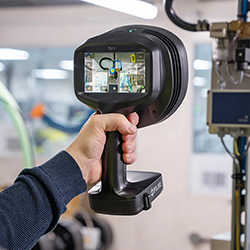Can Stage 3 FSA Confirm Your Safety Instrumented System Is Ready for Operational Use?
The primary goal of an FSA Stage 3 is to verify that the installed safety instrumented system (SIS) matches the design package and is prepared for operational use.
FSA Stage 3 takes place once installation, commissioning, and validation activities are finalized, often as part of the Pre-Startup Safety Review. This stage entails a comprehensive assessment of the installation and pre-commissioning efforts to confirm that the SIS are properly implemented and prepared for safe operational use.
This assessment is the final FSA prior to startup. Subsequent stages are done after gaining experience in operations and maintenance (Stage 4) and, after modifications and prior to decommissioning of a SIS (Stage 5). The deliverable for a Stage 3 FSA includes a comprehensive report with a Stage 3 FSA checklist derived from a site visit and independent assessment. This report will present findings, including serious deficiencies, recommendations, and general observations.
The following recommendations will ensure a cost-effective, efficient, and expedient Stage 3 FSA.
What Is the FSA Stage 3 Process?

A Functional Safety Assessment (FSA), defined by IEC 61511, is an evidence-based investigation into the functional safety achieved by one or more safety instrumented systems (SIS) and/or other protection layers.
Stages 1 through 3 of an FSA cover the Safety Instrumented System (SIS) from its inception through design, construction, and commissioning. These stages are essential for the implementation of a new or modified safety system. Stage 3, which occurs after the installation, pre-commissioning, and final validation of the SIS, ensures that the system is ready for operation and can effectively mitigate risks as intended.
The FSA Stage 3 process typically consists of the following steps: installation validation, operational readiness, maintenance preparedness, and system validation. The objectives for each of these processes are listed below in the table below.
|
Process Step |
Objectives |
|
Installation Validation |
● Physical Validation: Ensure that hardware, such as transmitters and valves, is correctly installed and wired according to design specifications. ● Wiring and Connections: Check that all wiring and connections comply with design documentation, including correct labeling, termination, and routing. |
|
Operational Readiness |
● Operator Training: Confirm that operators are trained to use the new system and understand its impact on process control. ● Procedure Verification: Ensure that operating procedures align with SIS functionality, including emergency shutdown procedures, alarm handling, and routine maintenance tasks. |
|
Maintenance Preparedness |
● Maintenance Training: Train maintenance personnel on SIS maintenance requirements, including routine checks, troubleshooting, and repair procedures. ● Spare Parts Inventory: Verify that an adequate inventory of spare parts is available to address potential failures, ensuring minimal downtime. |
|
Validation of System Functionality |
● Component Testing: Each component undergoes testing to ensure correct functionality. For instance, sensors must accurately detect process parameters, and actuators and final control elements must respond as expected. ● Integrated Systems Testing: Conduct integrated testing to ensure that the entire SIS works as a cohesive unit, as envisioned. This involves simulating process conditions and verifying the system's appropriate response to hazardous situations. |
Team Engagement and Stage 3 FSAs
During Stage 3 FSAs, typical issues include discovering that safety instrumented functions do not perform as expected during testing, often stemming from incorrect design assumptions. To mitigate such issues, it is essential to involve key personnel such as operations supervisors and maintenance technicians in the assessment process. This personnel inclusion ensures a comprehensive understanding of the system's functionality and readiness.
Conclusion
Comments (0)
This post does not have any comments. Be the first to leave a comment below.
Featured Product

